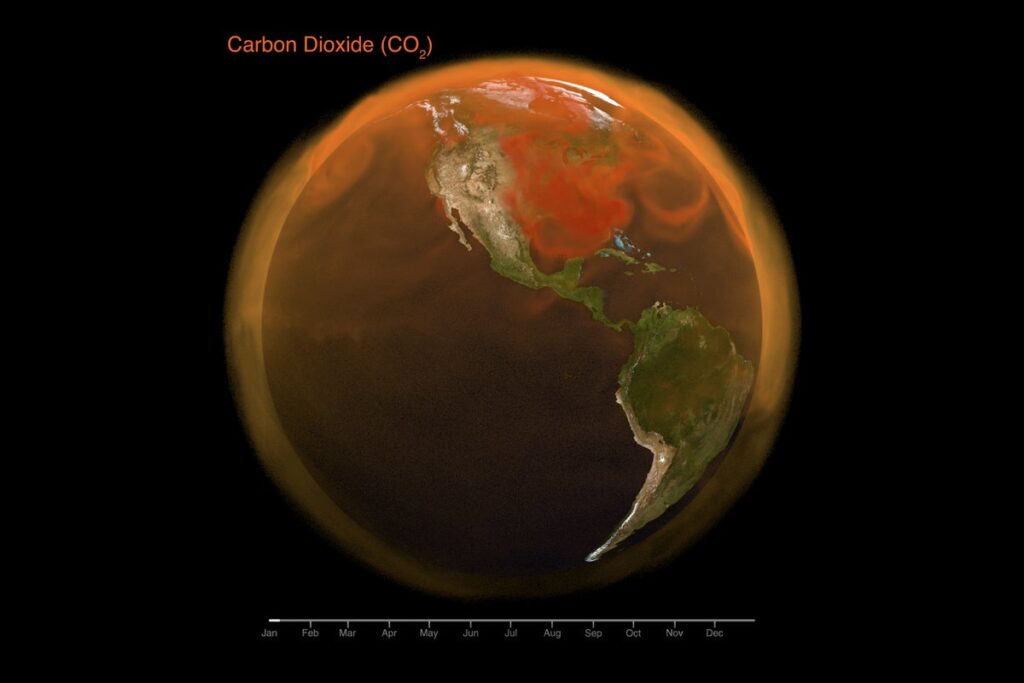Record Surge in Atmospheric CO₂: NOAA’s Downplayed Findings
By Chelsea Harvey & E&E News

Source: NASA’s Scientific Visualization Studio
Significant Increase in CO₂ Levels
Recent analysis from NOAA reveals that carbon dioxide concentrations in the atmosphere surged by 3.7 parts per million in 2024, marking the largest increase recorded in recent years. Despite the significance of these findings, NOAA’s announcement received limited public attention due to a decision by officials to downplay the release of this critical data.
Minimized Announcement and Its Implications
Instead of a detailed press release or public report, NOAA opted to share the findings via social media channels, neglecting to highlight the unprecedented nature of last year’s CO₂ spike. This strategy represents a notable shift from NOAA’s traditional practice of issuing thorough annual reports accompanied by media releases.
A source familiar with the communication process indicated that while a public web story was prepared, it was discarded at the last minute, leading to concerns over inadequate media coverage of a vital climate issue. This strategy may have contributed to a lack of awareness regarding the alarming rise in atmospheric CO₂ levels.
Context of NOAA’s Communication Shift
The current administration’s approach towards NOAA’s science and public communication signals a broader trend of reducing transparency. Recently, NOAA has ceased its regular climate briefings for the media, which previously provided updates on climate and weather data.
Compounding these challenges, widespread layoffs and proposed reorganizations threaten to eliminate key climate initiatives within the agency, including its Office of Oceanic and Atmospheric Research.
Scientists’ Concerns and Future Projections
Experts contend that the surge in CO₂ could indicate that natural ecosystems are increasingly overwhelmed by climate change. Traditionally, environments like forests and wetlands have served as carbon sinks, absorbing excess CO₂. However, as these ecosystems face heightened stress from drought and wildfires, their ability to mitigate carbon emissions may be diminishing.
Philippe Ciais, a climate scientist at the Institut Pierre-Simon Laplace, remarked, “In my opinion, there is no reason to believe that this will not continue with further dry years in the future.” This concern is echoed across the scientific community, as preliminary studies suggest a decline in the Earth’s natural carbon sinks, especially in the tropics, which have faced increased drought conditions.
Tracking the Sources of CO₂ Growth
The ongoing influence of El Niño may have contributed to the conditions leading to higher CO₂ levels in 2024. However, the phenomenon alone cannot comprehensively explain the data observed; many climate models may not adequately account for the rapid degradation of critical ecosystems under climate stress.
Moreover, 2024 also saw fossil fuel emissions reach alarming new heights, adding another layer to the complexity of understanding this spike in CO₂. As experts stress, without addressing these emissions, meeting the targets set by the Paris Agreement remains a significant challenge.


